|
Centrip Editorial Board
Six of Nagano's Leading Historical and Cultural Gems

Nagano has a reputation as a premier destination for those looking to enjoy its scenic beauty and variety of outdoor activities. The large number of culturally and historically significant hotspots spread throughout the prefecture provide the perfect complement to any trip to the area. These six locations reveal the deep and lasting connections that humans have established with this wondrous landscape.
Komoro Kaikoen Castle Ruins Park
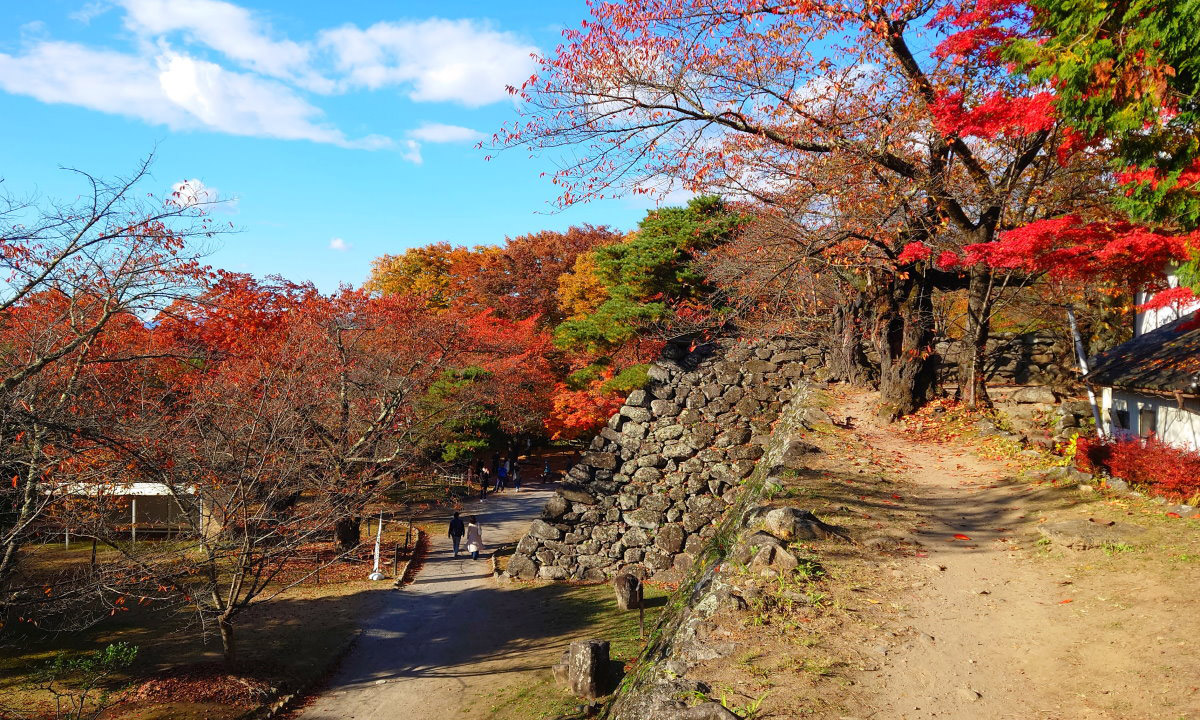 The stone walls of Komoro Castle and autumn leaves
The stone walls of Komoro Castle and autumn leaves
Komoro Castle was a unique fortification built almost 500 years ago. It endured for centuries through battles, fire, and floods before a wave of political and cultural change in the late 19th century Meiji Period led to its disuse and dismantling. Though only a few of the original structures remain, they are impressive, and the former castle grounds, now referred to as Kaikoen, preserve this historic place for modern visitors. Kaikoen provides a fascinating window into the past and showcases the best of Nagano's seasonal beauty with a pink wave of cherry blossoms taking over the park in spring and an eruption of fiery fall colors in autumn.
The Castle
Traditionally, castles in Japan were arranged so that their keep was built on a hilltop or other natural prominence, rising well above the moat and outer walls. Komoro Castle, however, defied the norm and is the only known example of a Japanese castle built in an inverse fashion. The outer gates were situated on the highest ground and the main castle structure sat at the lowest level, below the fortifications. This design makes sense in light of the area's geography. The castle was bordered to the west by cliffs and the Chikuma River, and to the north and south by deep valleys, making enemy invasions unlikely from those directions. This left the large eastern gate east as the only point of vulnerability, meaning that all men and resources could be focused here when necessary.
The only remains of the castle’s original structure are the original Edo Period eastern gate, Otemon; and the inner gate, San-no-Mon. Both are designated as Important Cultural Properties for their outstanding historic value. In addition, several other sections of stone walls can also still be seen.
The Grounds
The expansive park houses a children's playground, a small zoo, art museum, shrine, and several small galleries, which means there is plenty to see and do on a solo sightseeing visit, or while on holiday with friends or family. To top it all off, admission to the site and all of the facilities mentioned above is a real bargain with the common ticket that runs only ¥500 for adults and ¥200 for children.
Tatsuoka Castle Site (Tatsuoka Goryokaku)
 Tatsuoka Castle's star-shaped moat is easily spotted from the hilltop observation deck
Tatsuoka Castle's star-shaped moat is easily spotted from the hilltop observation deck
Tatsuoka Castle is a national historic site, unlike almost anything else in Japan. This 5-pointed structure was inspired by European fortresses and was built at the end of the samurai era to serve as the administrative seat of a feudal domain's lord. It is one of only two such star-shaped forts found in all of Japan. A visit here is a window into a fascinating period of Japanese history.
The Fortress
Tatsuoka Castle was commissioned by a daimyo whose rank did not allow him to erect a castle with a large central keep. Instead, Tatsuoka Castle would serve as the new headquarters of his domain and his residence and would need basic defensive fortifications. Construction began in 1863 and was completed in 1867, the final year of the Edo era (1603-1868). The star design was patterned after French designs and had never been seen in Japan before. Replacing rounded exterior walls with the sharp angles of a star's points was meant to optimize the firing angle of cannons and other artillery and eliminate blind spots in which enemies could use as shelter.
The fortress was in use for only a year before the collapse of the shogunate and the subsequent massive political shakeup meant the end of the feudal system. In 1872 the site was deconstructed and many of its buildings were relocated. Only one original building remains inside the star-shaped moat: the complex's kitchen, which is joined by an elementary school.
The Observation Platform
A walk around the moat is interesting and especially nice in spring when the cherry blossoms lining the waters are in full bloom. To understand the fortress' full scale and to capture it in a single frame, put some distance and height between you and it. If you are traveling to the area by car, you can follow the narrow unpaved forest road up to the small observation deck on the hillside behind the complex for a memorable bird's eye view.
Shiodadaira Japan Heritage Site
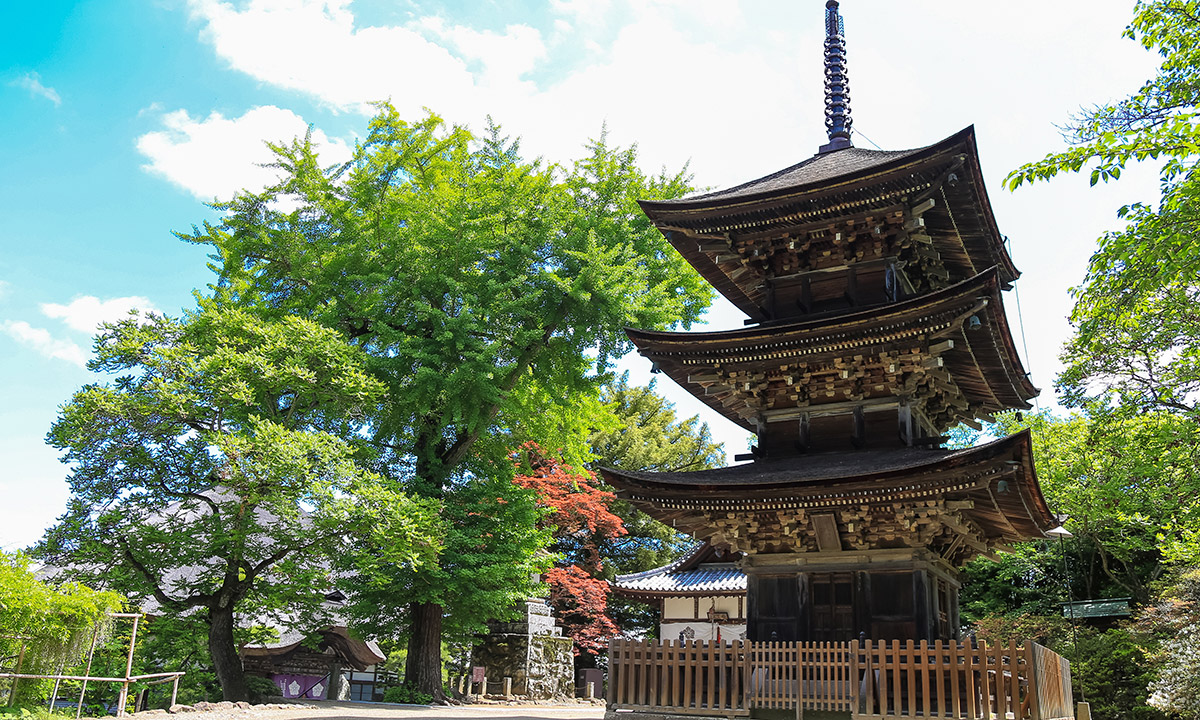 The lovely three-storied pagoda on the grounds of the Zensanji Buddhist Temple
The lovely three-storied pagoda on the grounds of the Zensanji Buddhist Temple
Shiodadaira is the broad, flat highland on the southwestern side of the Chikuma River in Ueda City. It has an incredibly rich assemblage of temples, shrines, hot springs, and intangible cultural assets that have been listed as Japan Heritage sites for their historical value and distinct characteristics. It is a fantastic place to discover the amazing depth of Nagano's culture and traditions.
The Region
The landscape of Nagano is dominated by mountains, making large areas of flat land precious regions that draw people to them. The mountains also served as natural borders that isolated and preserved the local cultures and customs that sprung up in each region. What sets Shiodadaira apart, is the high concentration of sites and traditions that remain remarkably well-preserved most of which date back to the Middle Ages.
The Heritage Sites & Intangible cultural properties
In 2020, Shiodadaira was declared a Japan Heritage Site. The official description of the listing includes the following explanation:
As the sun rises on the morning of the summer solstice, its rays mark out a ley line, a straight line that connects multiple sacred spots. First, the sun’s light touches Shinano Kokubunji Temple, where the Dainichi (“Great Sun”) Nyorai Buddha is enshrined, before passing on through the Ikushimatarushima Shrine, where the earth is the deity. Finally, the light reaches Bessho Onsen hot springs, which are illuminated against the backdrop of Mt. Okamidake, where dragons are said to dwell. A significant number of shrines and temples are situated along this path of light.
In addition, many of the other shrines and temples spread across the area are outstanding on their own. Chuzenji Temple is the oldest wooden building in central Japan, Zensanji is home to a delightful three-storied pagoda built to house the bones of the Buddha, Anrakuji is the oldest Zen temple in Nagano. Anrakuji is the oldest Zen temple in Nagano, famous for its three-storied octagonal pagoda, which has been designated as a national treasure.
Zenkoji Temple
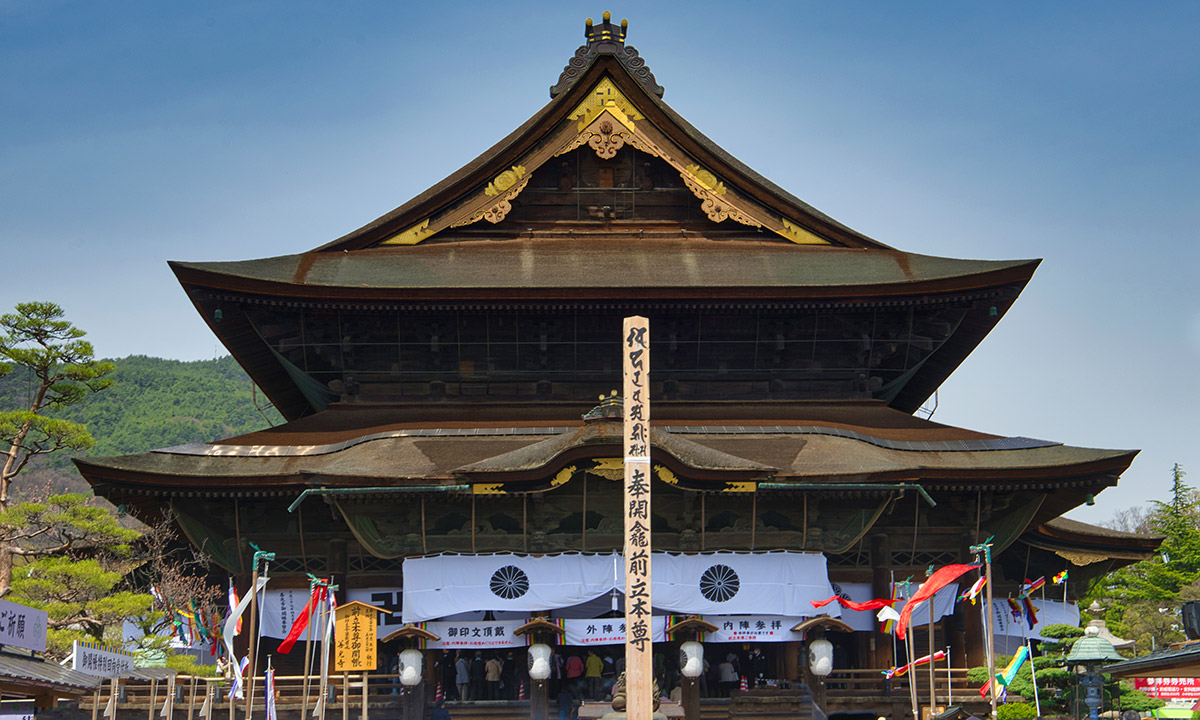 Zenkoji's grand main hall, seen here, is the focal point of the Gokaicho ceremony
Zenkoji's grand main hall, seen here, is the focal point of the Gokaicho ceremony
Zenkoji is the most famous destination on this list. It is a wildly popular temple whose legendary founding and importance to Japanese Buddhism are unrivaled, and itinfluence on the historical and cultural development of Nagano cannot be overstated. Gokaicho, an event occurring every seven years demonstrates the temple's continued power and reach. This 57-day special event routinely hosts upwards of 6 million visitors, with the next scheduled to occur in the spring of 2022.
The Temple
Zenkoji's origin story begins in India, at a time before Buddhism had been brought to Japan. A buddha statue made its way from India to Japan in the mid 6th century and is said to have been Japan's first official introduction to the religion.
The revered image of the Buddha changed hands and locations several times in the intervening years, before landing in Shinano (modern-day Nagano) and being enshrined at Zenkoji Temple in the year 642. The statue was originally displayed for some years after the temple's founding, but later concealed from the public, and is now completely off-limits.
The unparalleled significance and intrigue of this hidden icon helped Zenkoji gain widespread recognition, and since at least the Edo period (17th century), Zenkoji has been regarded as a temple that everyone should aim to worship at, at least once in their lifetime. Nagano city itself grew and prospered thanks to the pilgrimage-drawing prowess of Zenkoji temple.
Gokaicho
While the original statue itself has been locked away and shrouded in secrecy for over a thousand years, a replica which human eyes are allowed to gaze upon was produced in the 14th century. The catch is, the duplicate is only revealed to the public in Gokaicho, which takes place once every seven years.
At the start of Gokaicho, the statue is carried inside a small, portable shrine to the main hall and transferred to the innermost sanctuary by priests. The statue remains on display until returning to its repository for another seven years of silence on June 1st. Other special services, festivals, and events take place in conjunction with Gokaicho. It is a massive spectacle that must be experienced, at least once.
The next event is scheduled for 2022, from April 3rd to June 29th, and will be a month longer than usual in an attempt to reduce crowding.
The Nakasendo's Sake Breweries
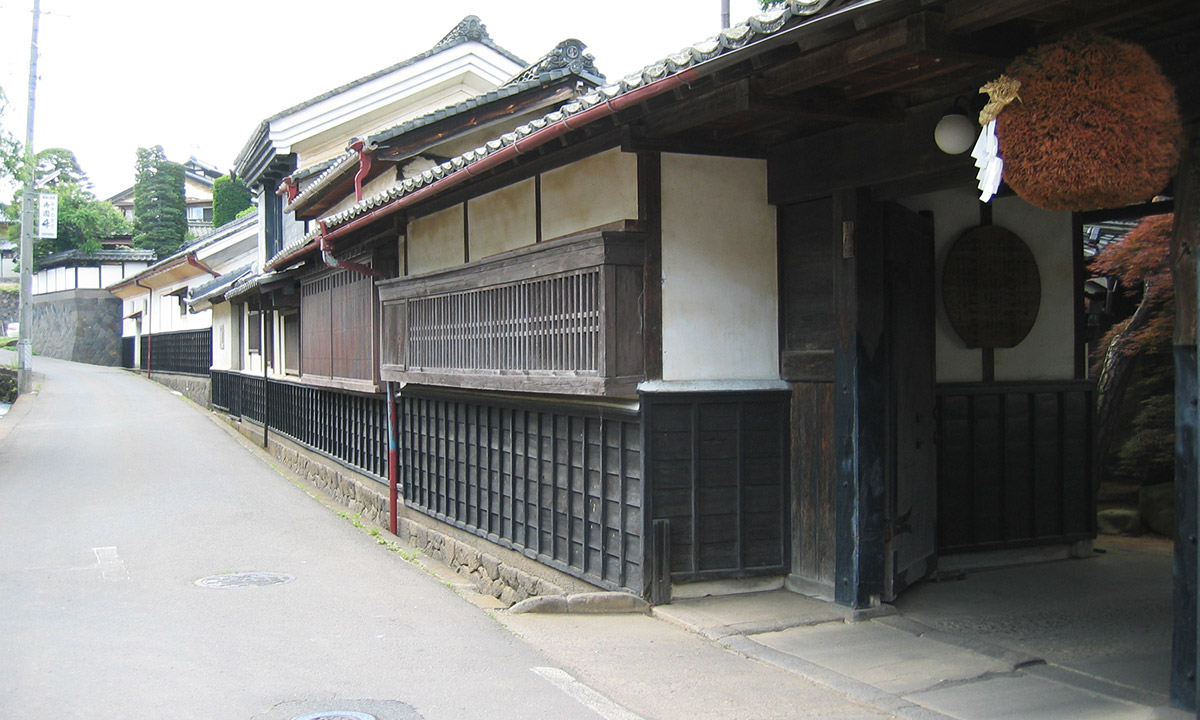 The historical architecture of a sake brewery
The historical architecture of a sake brewery
Very few things go hand in hand with Japan’s past (and present) more than a clear, refreshing cup of fermented rice alcohol. Sake is a distinct element of Japanese culture and has possibly played a larger part in shaping Japan's history than any of us realize. There's no doubting the connection between sake and samurai and the throat-tingling evidence of that tradition still exists along the ancient Nakasendo highway.
The Nakasendo & Motai-aino-shuku
In the Edo period (1603 to 1868) a system of five major highways linking the new capital of Edo (Tokyo) with the former, Kyoto, was created. The station of Motai-aino-shuku was an unofficial station on the Nakasendo with a reputation as a producer of high-quality rice and was blessed with access to abundant, pure water springing up from the mountains. Good rice and good water are two of the most essential ingredients for crafting delicious sake. Residents of Motai began brewing sake in the late 1600s and slowly transformed their region into one of several areas along the Nakasendo famous for sake.
Osawa and Takeshige-Honke Sake Breweries
Today two celebrated sake breweries, in Motai are still actively brewing sake on the Nakasendo: The Osawa and Takeshige-Honke sake breweries. These brewers have been satisfying locals and travelers alike with the smooth finish and sophisticated flavors of their blends for hundreds of years. Today their brands are represented by their respective signature products: Meikyo Shisui and Misonotake respectively. These products are available as far and wide as Osaka and Tokyo.
Those passing through the area on a walk of the Nakasendo shouldn't miss the opportunity to stop in to sip a sweet (or dry) glass of sake or to pick up a bottle for the long road ahead. Those coming for the breweries should make a point of appreciating the traditional streets and buildings of this old post town bursting with Old-Nakasendo charm.
Suwa's Five Major Sake Breweries Gokura / Suwa Gokura
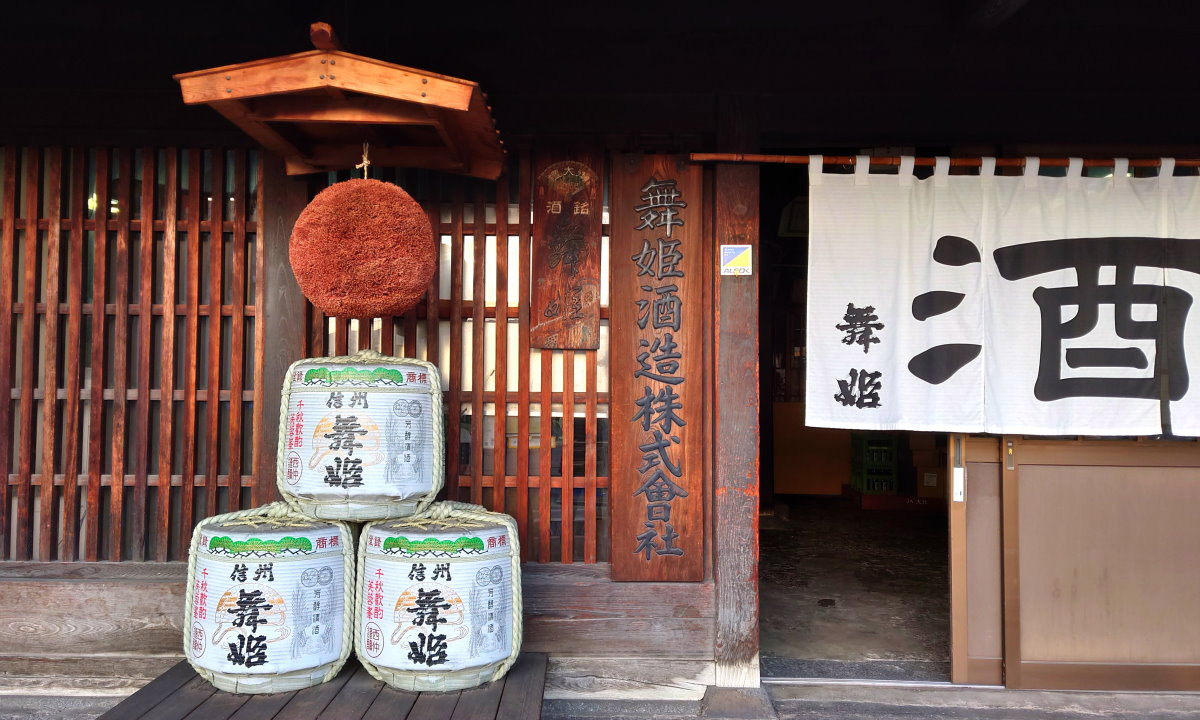 Barrels of sake stacked at the entrance of Suwa's Maihime Sake Brewery
Barrels of sake stacked at the entrance of Suwa's Maihime Sake Brewery
The Suwa area has a long, award-winning tradition of sake brewing that continues today and can be experienced on a tasting tour of the Suwa Gokura: five distinguished breweries lining a single street with only a few hundred meters separating the first from the last!
Suwa and Sake
he environment around Suwa has just the right ingredients and conditions necessary to produce excellent sake, including access to plenty of pure water and fresh clean air from the surrounding mountains, and sufficiently frigid temperatures that continue over the long winter months. Its central location at the crossroads of the Nakasendo and Koshu Kaido also ensured that it was a populated, busy, and prosperous area. It is said that sake brewing in Suwa originally arose to supply gifts of sake to the nearby castle and as offerings to the Suwa Grand Shrine.
Suwa Gokura
Nowadays Suwa's sake-making tradition is kept alive by a group of five proud breweries known collectively as the Suwa Gokura. They are Maihime, Reijin, Honkin, Yokobue and Masumi. Each has its own unique history and story, but all have legacies that stretch back more than a hundred years, with the oldest Masumi having been established in 1662.
The breweries provide a unique opportunity for visitors to sample and compare many different types of sake. The five breweries cooperate on a tasting experience they call Gokuraku. Visitors can purchase a Gokuraku tasting set for ¥2,000 at any of the five breweries. The set includes a small Gokura branded bag and sake cup along with a stamp card. Presenting your stamp card at any of the breweries allows you to taste and compare up to five different types of sake at each location.
If you time your visit to coincide with one of the biannual spring or fall outdoor drinking events, you can enjoy your sake while sampling a variety of food from local restaurants and food stalls. In any case, Suwa Gokura ticks all the right boxes for curious, casual drinkers and enthusiasts alike.
Click here to get the latest information on Central Japan.Centrip Japan - Nagoya and Chubu Information

